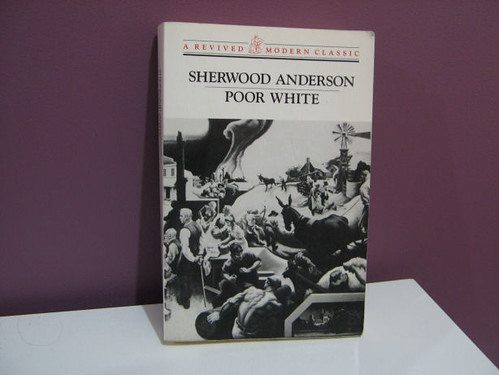
With his second wife, Elizabeth Prall. Sublime photo.


I was first introduced to Sherwood Anderson through a poem by Charles Bukowski entitled One for Sherwood Anderson. And for the time he wrote in, I expected him to hold typically racist views about minorities. But when I read the two books above I didn't find any racist sentiment involved. These two books were very refreshing due to their clear, direct writing style mixed with the complexity of the content that they discussed. It was surprising to see how direct and concise his writing was at the time it was published, the early 20th century.
But my one reservation with Caucasian writers during the early to mid-20th century is that they're explicitly racist towards one minority. I don't have any desire to read Hamsun or Pound (yes), for example. And I looked for racist overtones in Anderson's writing.
Autonomy is important to me, both as a writer and a reader.
From what I've studied, I couldn't find any racial bias towards African-Americans, or Semitic people, or any others in Anderson's writing.
From what I've studied he wrote in racist voices (the 15 year old in I Want to Know Why, which parallels Huck Finn) but he rallied against racism even in those times, which is documented here. Did he think the segregated school system in 1928 was wrong and spoke out against it? I would say so. But maybe I'm wrong, and my whole outlook on Sherwood Anderson and my acceptance of his style and literary efforts are all for naught. No matter how much I appreciate his work, no matter how painful it may be the truth is more appreciated. The sublime photo will turn ugly as a result. And the world will grow dark yet again. I'll be reminded why I haven't done a post on any Arabic authors (which is coming) again. And I am thinking of it, and researching it.
No comments:
Post a Comment